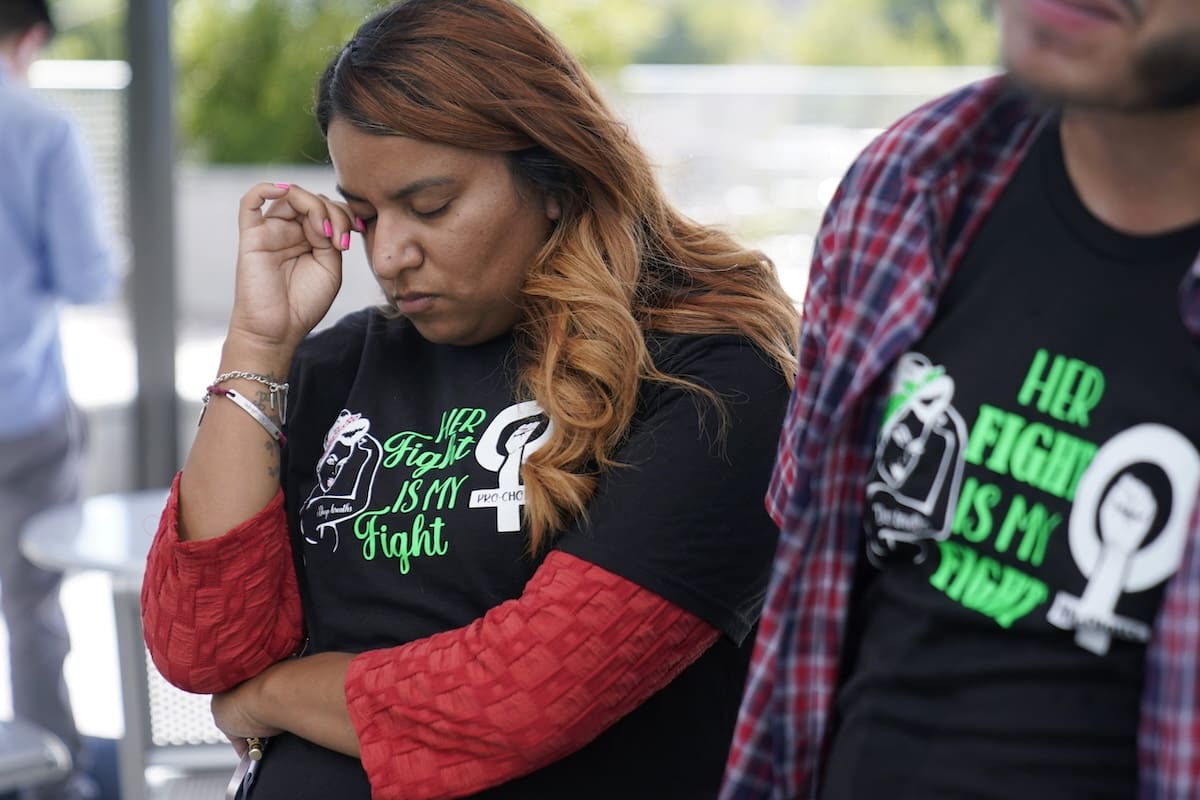A Heartbreaking Journey Through Texas’ Abortion Law
At 20 weeks pregnant, Samantha Casiano faced a devastating discovery during her ultrasound. Already a mother of four, she learned her unborn daughter had anencephaly, a fatal condition preventing survival outside the womb. Despite the joy of expecting another child, the diagnosis shifted her world.
Initially, Samantha mistook her symptoms for a urinary infection, only to be surprised by a positive pregnancy test. Her family, although initially shocked, embraced the news with excitement and began picking out names.
During the ultrasound, the mood changed drastically when the technician abruptly left to fetch a colleague. It was then Samantha received the grim news: “I’m sorry Mrs. Casiano, you’re having a girl but she has been diagnosed with anencephaly and it means that she’s incompatible with life.”
Anencephaly, Samantha quickly learned, is a birth defect where parts of the brain and skull are missing, making survival impossible. Overwhelmed by the diagnosis, she called her husband, Luis, unable to process the reality that their daughter wouldn’t survive.
Texas Laws and Limited Options
In Texas, where a strict abortion ban is in place, Samantha discovered her options were severely limited. Her OB-GYN confirmed there was no legal way to terminate the pregnancy, even with the dire prognosis, due to state laws.
Despite her Catholic upbringing, which traditionally opposes abortion, this experience transformed Samantha’s perspective. She realized the necessity of abortion access, not just for herself but for others who might face similar situations.
The thought of leaving Texas for the procedure was financially and logistically impossible for Samantha and Luis. With work obligations and four children at home, continuing the pregnancy was their only choice.
Living with the Inevitable
For the next 12 weeks, Samantha endured the emotional turmoil of feeling her daughter, Halo Hope, move within her, knowing she wouldn’t survive. Every day presented the painful reminder of her daughter’s fate.
The community’s support helped cover the costs of Halo’s eventual funeral, easing one burden. Yet the emotional toll on her family, particularly her children, was profound as they navigated the grief and public curiosity about their unborn sister.
The Aftermath and Advocacy
Halo was born at 32 weeks, living only four hours. The painful experience of watching her daughter struggle for life fueled Samantha’s resolve to advocate for change. She joined a lawsuit challenging Texas’ abortion ban, seeking clearer exceptions for cases like hers.
The case, Zurawski v. Texas, briefly succeeded when a district judge ruled in favor of medical discretion in emergencies. However, the Texas Supreme Court later overturned this decision, maintaining the restrictive laws.
Samantha’s journey didn’t just affect her; it reshaped her family dynamics and tested her marriage. Despite these challenges, she remains a vocal advocate for reproductive rights, determined to share Halo’s story and push for legislative change.
A Mother’s Resolve
Through public speaking and advocacy, Samantha continues to fight for reproductive freedom, inspired by her daughter’s brief life. Her story serves as a poignant reminder of the human impact of legislative decisions on abortion rights.
As Samantha and her family honor Halo’s memory, she remains committed to ensuring her daughter’s struggle wasn’t in vain, using her voice to advocate for others facing similar challenges.






